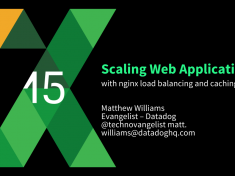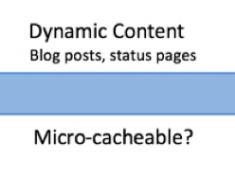
Monitoring NGINX Plus Statistics with ELK
In today’s world, having a scalable and reliable web infrastructure is crucial to your site’s success. Monitoring NGINX Plus performance and the health of your load-balanced applications is critical, and acting on these metrics enables you to provide a reliable and satisfying user experience. Knowing how much traffic your virtual servers are receiving and keeping an eye on error rates allows you to triage your applications effectively. NGINX Plus includes enterprise-ready features such as advanced HTTP and TCP load balancing, session persistence, health checks, live activity monitoring, and management to give you the freedom to innovate without being constrained by infrastructure. The live activity monitoring feature (implemented in the NGINX Plus Status module) makes it easy to get key load and performance metrics in real time. The large amount of useful data about the traffic flowing through NGINX Plus is available both on the built-in [ more… ]



